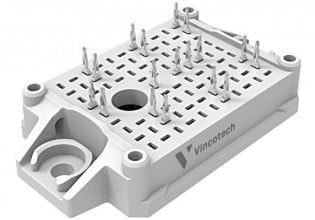The MIPI® Alliance, an international organization that develops interface specifications for mobile and mobile-influenced industries, today released MIPI I3C, Improved Inter-Integrated Circuit, a sensor interface specification that streamlines sensor integration in smartphones, wearables, Internet of Things (IoT) devices and automotive systems.
Although MIPI I3C was originally developed to meet the needs of sensor applications, it can also be applied anywhere low-to-medium bandwidth devices benefitting from integrated data and control via byte-based transmission are found, such as power management and control interfaces. In addition, MIPI I3C will be utilized in other MIPI specifications under development, including MIPI Touch and MIPI Debug for I3C. MIPI Alliance welcomes industry participation in this work and invites member companies to collaborate in the creation of these forthcoming specifications.
“Today’s release of MIPI I3C is an important milestone for MIPI Alliance and the developer community because it brings together multiple sensor interface approaches around a unifying specification that provides conveniences and system-level benefits for many applications,†said Joel Huloux, chairman of the board of MIPI Alliance. “We expect MIPI I3C will play a fundamental role in expanding opportunities for sensor-based applications in mobile, mobile-influenced and embedded systems markets.â€
MIPI I3C supports the adoption and proliferation of sensors in mobile-connected products. It makes it easier to integrate sensors in small space-constrained form factors, alleviates interface fragmentation, helps minimize pin count, and controls system-wide energy consumption. The specification gives developers a greater choice of design options, reduces system-level implementation costs, and helps shorten time-to-market for new applications.
MIPI I3C delivers these benefits by incorporating, consolidating and advancing I2C, SPI and UART with a new approach. The solution is comprehensive and scalable and provides a superset of features and functionalities while supporting legacy devices.
“The unified approach of MIPI I3C provides many strategic advantages for developers,†said Rick Wietfeldt, chair of the MIPI Alliance Technical Steering Group. “For example, with MIPI I3C, most types of I2C devices can coexist with I3C devices on the same bus, enabling vendors to migrate current I2C designs to the new standard. Likewise, newly designed MIPI I3C devices can work on existing legacy I2C buses.â€
MIPI I3C specifies a chip-to-chip interface that can connect all sensors in a device to the application processor. It is implemented on a standard CMOS I/O using two wires. The specification achieves clock rates up to 12.5MHz and provides options for higher performance, high-data rate modes. It uses a fraction of the power while providing more than an order of magnitude the bandwidth compared to I2C.
MIPI I3C can be used to build smartphones, virtual-reality head-mounted devices, robot drones, medical instruments, autonomous vehicles, industrial equipment, all-in-one computers, and TV remotes, among others.
The specification supports numerous sensor classifications and functions. Examples include accelerometers, touch screens, time-of-flight cameras, sonic/ultrasonic sensors, transducers, actuators and others. MIPI I3C also supports a range of biometric sensors and environmental sensors and can be used to interface sensors used for near-field communications, haptics feedback, and infrared or ultraviolet sensing.
The MIPI Alliance Sensor Working Group developed MIPI I3C to ensure the specification benefits companies across the sensor ecosystem. The working group collaborated with the MEMS and Sensors Industry Group (MSIG) to survey both organizations’ members to assess sensor interface needs and industry technology gaps that traditional sensor interfaces did not address.
Companies participating in the working group include Advanced Micro Devices, Inc., Analogix Semiconductor, Inc., Cadence Design Systems, Inc., Google, Inc., Intel Corporation, Knowles Electronics, Lattice Semiconductor Corp., MediaTek Inc., NXP Semiconductor, Qualcomm Incorporated, QuickLogic, Sony Corporation, STMicroelectronics, Synopsys Inc. and others.
“This has been a truly collaborative effort, and we appreciate the dedicated and visionary work that has produced the MIPI I3C specification,†said Ken Foust, chair of the MIPI Alliance Sensor Working Group. “MIPI I3C is practical and forward looking. We will continue to advance the specification to help companies serve the always-evolving and increasingly demanding markets for innovative, sensor-enriched products.â€






